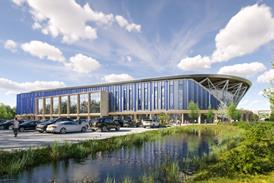- Home
- Intelligence for Architects
- Subscribe
- Jobs
- Events

2025 events calendar Explore now 
Keep up to date
Find out more
- Programmes
- CPD
- More from navigation items
How can architects attract Boris Johnson’s attention?

The PM has stuck the knife into almost everything else but the Beauty Commission has somehow survived – and may prove to be an unexpected ally
There were a couple of moments during Boris Johnson’s Manchester speech on Saturday when I had to wonder if the new prime minister had been reading Jane Jacobs.
He was talking about how London had turned itself around from the decline of the 1960s and 70s to regain its position as a world-leading city.
He identified the four basic ingredients of success as liveability, connections, culture and, finally, devolved power and responsibility.
Liveability required safe streets, affordable homes, good jobs and great public services, he said, while connections boiled down to broadband and transport. “Inspiration and innovation, cross fertilisation between people, literally and figuratively, cannot take place unless people can bump into each other, compete, collaborate, invent and innovate,” said Johnson.
…
This content is available to registered users | Already registered?Login here
You are not currently logged in.
To continue reading this story, sign up for free guest access
Existing Subscriber? LOGIN
REGISTER for free access on selected stories and sign up for email alerts. You get:
- Up to the minute architecture news from around the UK
- Breaking, daily and weekly e-newsletters
Subscribe to Building Design and you will benefit from:

- Unlimited news
- Reviews of the latest buildings from all corners of the world
- Technical studies
- Full access to all our online archives
- PLUS you will receive a digital copy of WA100 worth over £45
Subscribe now for unlimited access.






